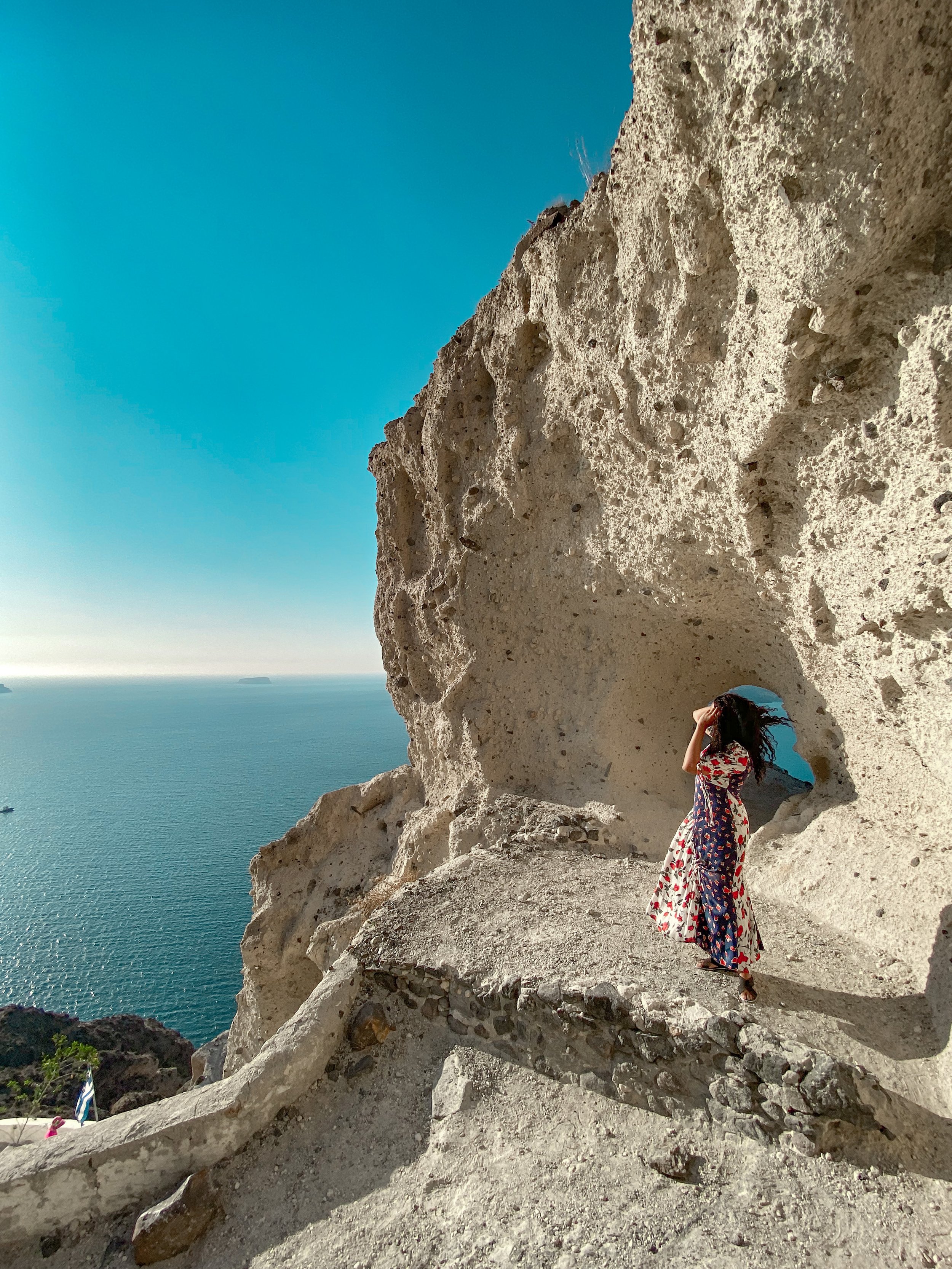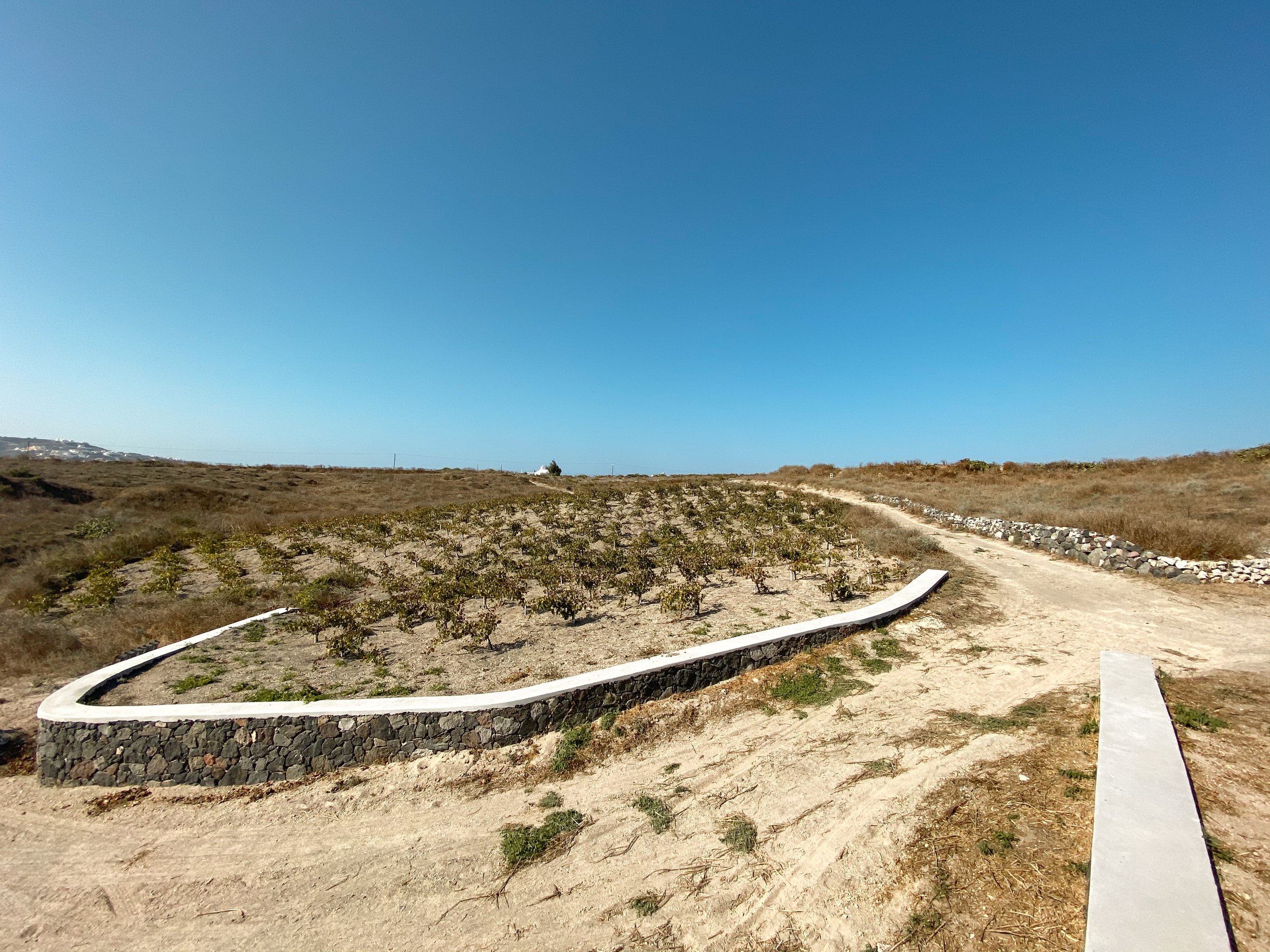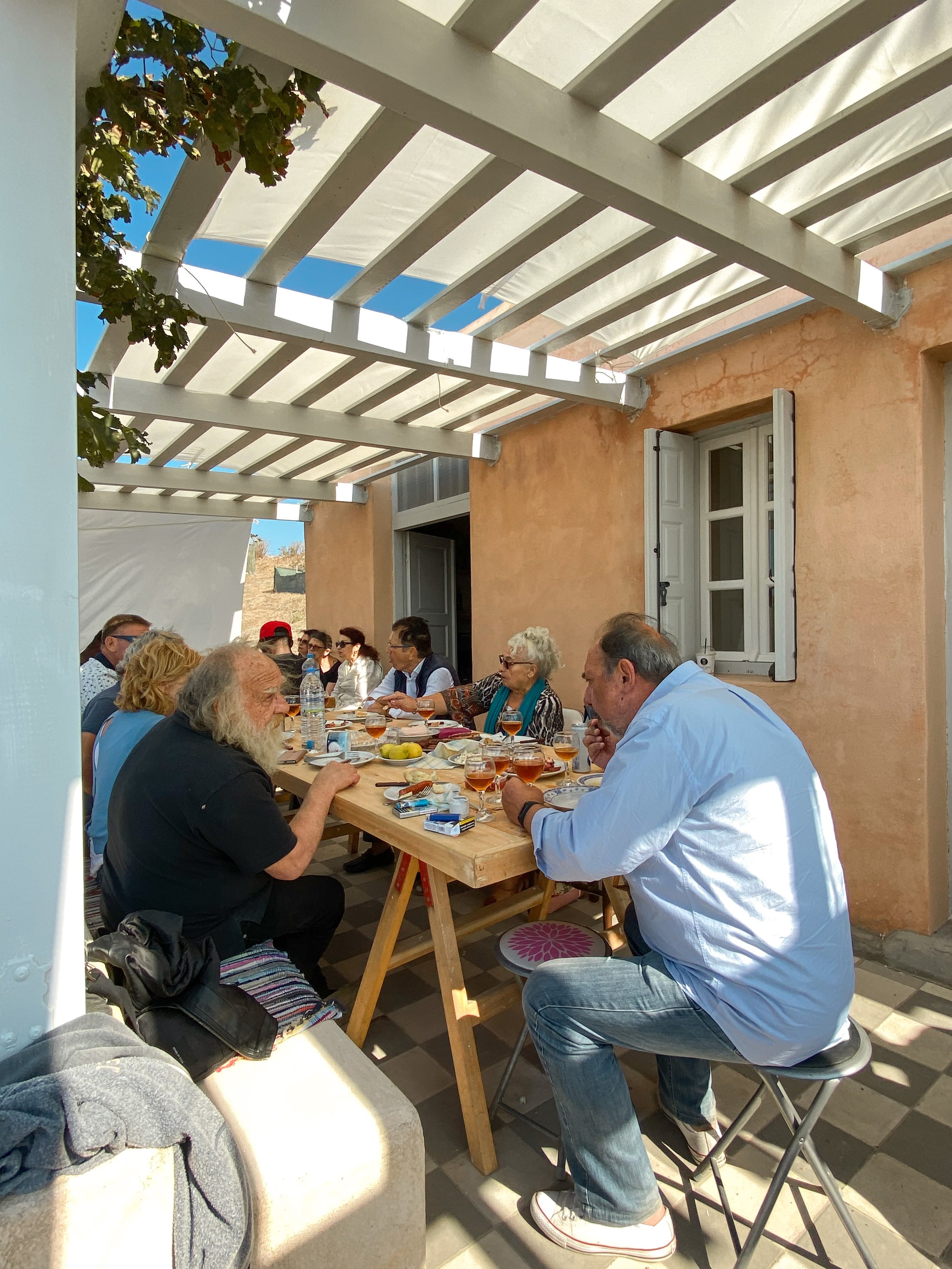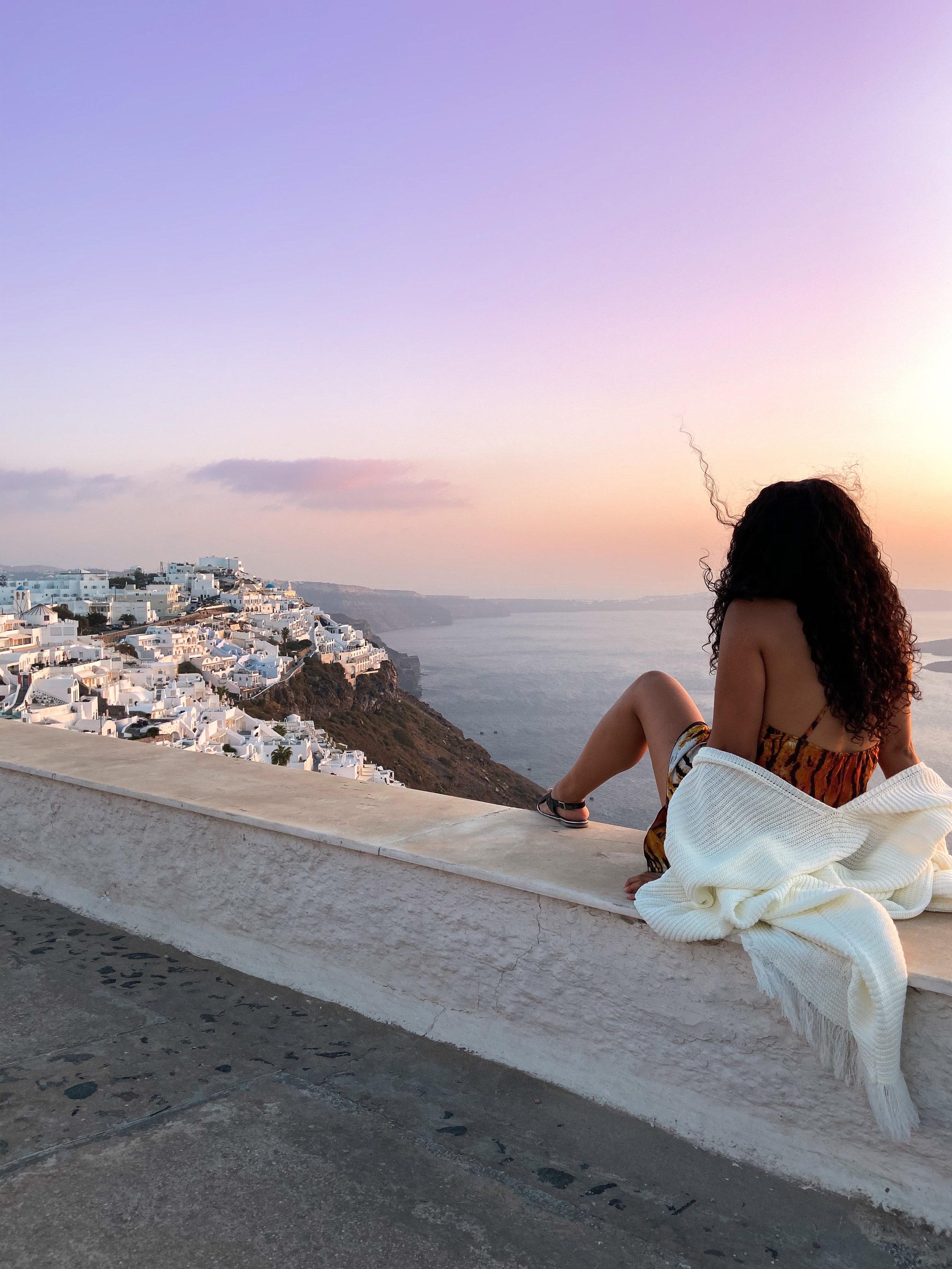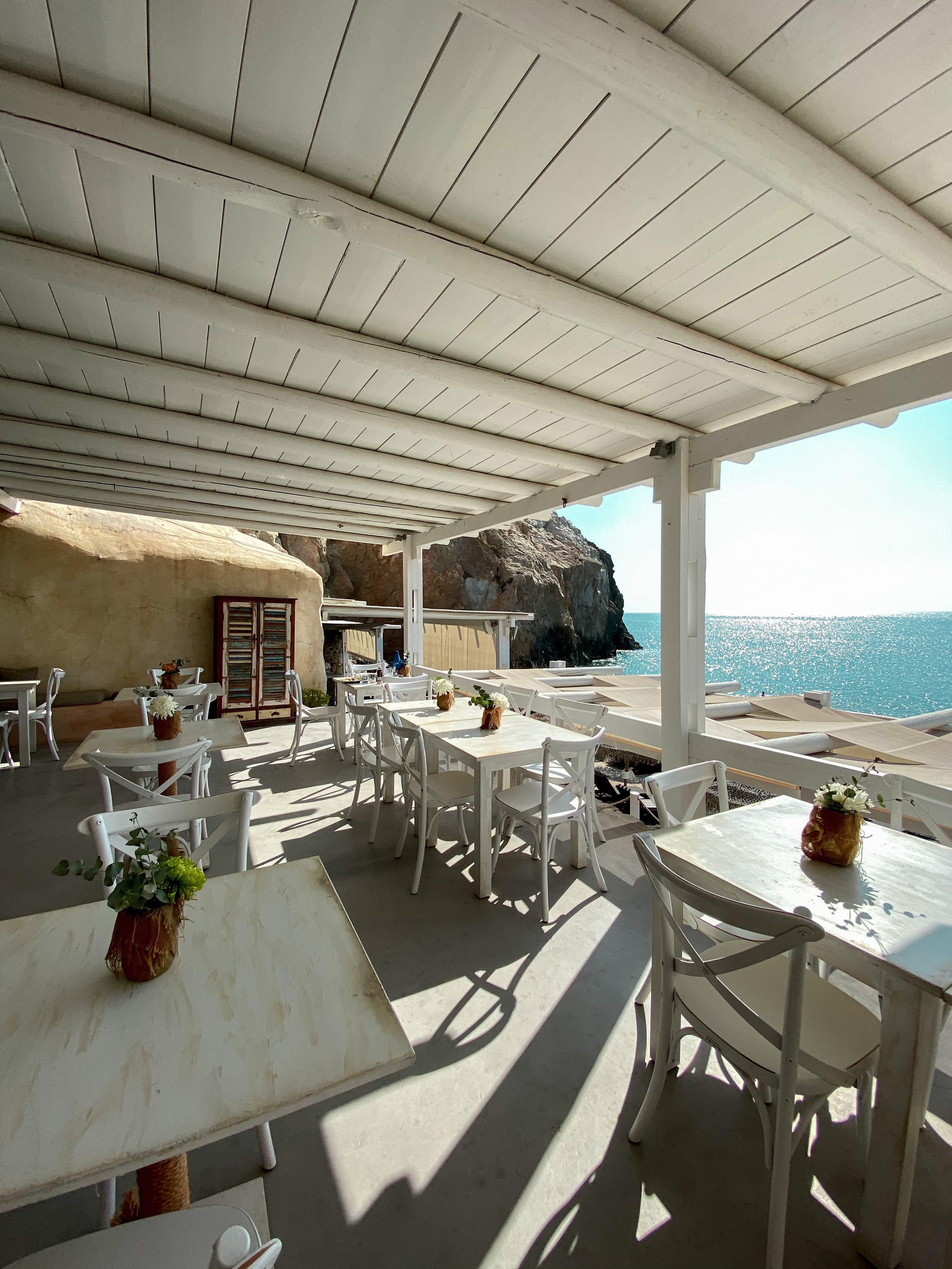Santorini: The playground of the Gods
Santorini is the closest place on Earth to what I can only imagine Heaven to be like. Make your way up the white, never-ending staircases, winding their way up the sides of the sheer volcanic cliffs, to find the famous white cave houses that are so iconic, sprinkled over the cliff-tops like a light summer snow shower.
I visited the volcanic island of Santorini (her real name actually being Thira) in October, in collaboration with the European Commission and the Erasmus scheme, to participate in a four-part cultural heritage trip to Greece. This has been one of the most interesting trips, picking apart what is typically known as a lavish instagram destination, to uncover the extraordinary history that has incidentally shaped much of the ancient world, and our world today.
First, I will start by taking you to Megalachori, the charming, traditional town we stayed in for the duration of our trip.
Megalachori
Megalochori is a classical, quiet Greek village, with winding alleys and beautiful architecture, in the centre of the wine region. Surrounded by vineyards on one side, and the Caldera (crater of the Volcano) on the other, Megalochori is the perfect place to stay in Santorini if you want to avoid any sort of crowd, have an authentic experience of Thiran food and culture, and contribute to sustainable tourism. The village is only inhabited by a few hundred people, and locals value money going into their own pockets.
Megalochori is not one of those villages that hang over the cliff, but you’ll be pleased to know that it does sit right on the edge! Just a few minutes walk from the centre and you are looking out at one of the most stunning, awe-inspiring views in the world. The caldera formed gradually over a series of eruptions, the largest being an extremely catastrophic one, around 1500 BCE. This eruption actually caused the volcano to submerge underwater, and wiped out an entire advanced Minoan civilisation. The effects of this eruption were seen in Cyprus, Egypt, and ash debris has even been found as far away as California, USA. What you can see in the middle of the caldera is the centre of the Volcano. There have been other damaging eruptions since, but none of that scale.
Santorini is so small, you can stand at one end of the island and see the other. Its crescent shape allows you to see every major village at once, meaning you can take beautiful coastal hikes. Megalochori is also home to the Heart of Santorini, a small, vaguely heart shaped hole in the cliff that gives a postcard view of the Caldera. Sit here if you dare!
Thiran Culture
For such a small, and at first, seemingly superficial island, Santorini boasts a history deeper than your grandma’s wrinkles. I went predominantly to learn about the history of the region through pottery. Greece is famous for being steeped in pottery, and really being the first region to popularise pottery as a trade and a means of storytelling. I was lucky enough to spend the week on a course with award winning potter, Andreas Makaris. He is a big deal in Greece, yet one of the most humble souls I have encountered. He moved to Santorini in 1985, and runs his pottery workshop in Megalochori. His father taught him, and his grandfather taught his father, and so on, I’d imagine, to as far back as pots can be traced!
I made my pot and let Andreas put it into the oven to be baked, and then baked again. He sent them to us London a few months later.
Venetsantos Winery
I mentioned that Megalochori was situated in the wine region of the island, and there is no better way to enjoy the regional wine than with the most spectacular view! Vinsanto is the traditional wine of Santorini, and the production of that wine dates back thousands of years. The wine is made predominantly from late-harvested, sun dried Assyrtiko grapes, and is the sweetest taste of sunshine to ever pass my lips. We found the bottles to be very expensive, so we headed back to a local winery in the village and bought from a couple for almost a third of the price.
Because the wine gods favour me so much, they just happened to coincide my trip with the Feast day of St. Averkios (the Saint of winemaking). On this day, new barrels of wine are opened and families gather together to eat and drink. We spent it with Andreas and his friends and family.
Imerovigli
Imerovigli is the highest village you can see on the inner coastline. Coming here to watch the sunset was far more serene than fighting for space in Oia. We bought a bottle of Moscato, found a ledge to perch on and watched the sky turn the most intense shade of burnt orange.
Oia, The Jewel Of Santorini
Oia (pronounced ee-ya), is the Santorini you will see in travel brochures and your favourite influencer’s feed. The blue-domed churches and the whitewashed cave hotels draped dramatically over the cliffsides are iconic. Oia didn’t steal my heart as I thought it might, as it was extremely packed and of course, over-priced. But there were rare moments where you would turn a corner and you would find an incredible, isolated view. If you take those moments as they are, you can easily enjoy Oia.
Pyrgos
Pyrgos is a beautiful hilltop town, with in my opinion, the best view of Santorini, as it is the highest village on the island. It used to be the capital of the island, situated on Mt Profitis. It is considerably less developed than the other main towns, and there are some great food options here.
Beaches
If you head down to Akrotiri (if you are taking the bus, it is the last stop), you will reach a harbour where there are two small boats, and for 10 euros each, you will be taken to the Red, White and Black Beaches. As Santorini is a volcanic island, the rock around the island is rich in iron, meaning that there are some areas (Red Beach and Ammoudi Bay) where the cliffsides are a coppery shade of red.
After Red Beach, we hopped back on the boat and headed to the next stop, Black Beach. It was breathtakingly beautiful and nothing like the Santorini I expected. Although, when we went back to Megalochori, we were told by locals that this was not the ‘proper’ Black Beach, so I am still unsure where I spent this serene afternoon.
My experience in Santorini was unique, in that I learnt a great deal about the history of the Island and its impact on the world. I spent afternoons making pottery, learning basic Greek language, cooking authentic dishes and watching mythical recitals. I saw beyond the ‘honeymoon’ of it all and was told exactly how much unsustainable tourism is affecting the Island. Try to go out of season (I went in October), and eat at local restaurants in the more traditional villages.







